It seems weird to build an airport in a salt marsh, but what do I know, I’m not a 20th century Man vs. Nature type, out to conquer the world, one strip of tarmac at a time.
Two such small airfields on our coast closed, and when they did, they offered up all this flat land.
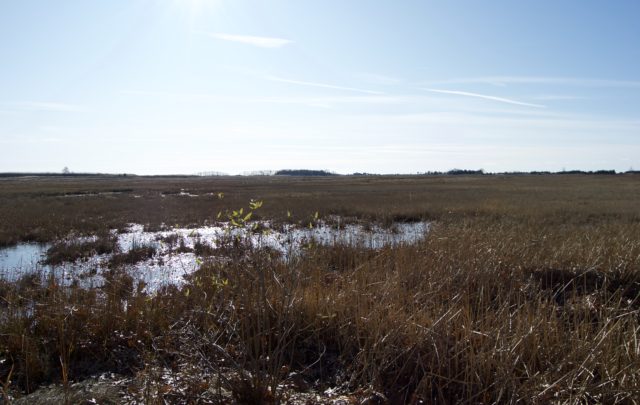
Madison’s Salt Meadow Park is a very sophisticated town park. Abusive and insulting language is prohibited, so don’t even fucking think about it.
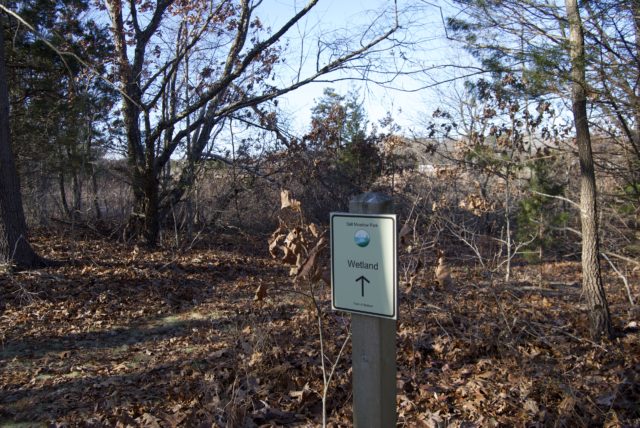
There are soccer fields. Brand new picnic tables. A coastal forest that provides habitat for migratory birds. Views of the salt marsh — 400 acres of it — that surrounds Salt Meadow Park. Its borders are Long Island Sound and the Hammonasset River.
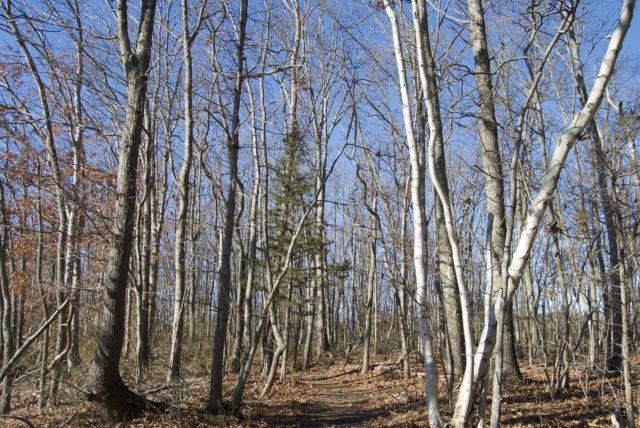
This almost became colorless gold coast sprawl.
What is now Salt Meadow Park had other lives.
It was a potato farm until purchased by the Griswold family in 1930. Beginning the following year, they operated a small airport on that land for the decades that followed. There was a boom in business during the WWII era, and then a long decline with attempts to make changes that were viewed each time as potential elixirs. The grass runway was converted to asphalt in 1969. Because the Town of Madison paid for the pavement, the family had to give the property title to the Town for twenty years. The Madison Aviation Commission was also created at this time. The paving was a move that the airport owner would later blame for the business flailing. In the early 70s, the airport operator pushed for power lines to be moved. Despite these changes, small planes using this airport continued to crash. DEP denied permission to expand the runway, as that would have encroached on wetlands.
There were eighteen privately-owned commercial airports remaining in Connecticut around the time the Griswold family and Town of Madison would need to figure out what to do with the title. It was expected that Griswold Airport would be closing soon– unsurprising since the owner, for at least five years, openly admitted to struggles. I would feel worse about so many of them shutting down, except that air travel is terrible for the environment. Usually when that conversation happens, it gets stuck in the realm of jet fuel and carbon emissions. This is not a newsflash, but airplanes don’t perform like helicopters. They require long, flat parcels of land. Now, the Connecticut Airport Authority tries to demand municipalities remove trees, which they refer to as “obstructions.” Then there’s the noise pollution. Small airports might make sense in larger states like Alaska or Montana, but in the third smallest state, you gotta be asking how many of these are necessary.
Here is where things got weird. Around that twenty year mark following the installation of an asphalt runway, the Town of Madison decided it should not purchase the airport. So, it operated in limbo for the next decade and change. Nobody was biting.
Without public hearing, the CT DEP (now, DEEP) traded away an easement in 2000; months later, a luxury condo developer signed paperwork for the site.
The developer was talking 250 units of age-restricted housing on the 42 acres between Route 1 and Hammonasset Beach State Park. Water’s edge.
That is wildly inappropriate land use knowing what we know now about rising sea levels, and, it was not any more excusable at the time. A 1983 article in the Hartford Courant — not an obscure publication or paywalled scholarly journal — stated that “If the Earth gets as warm as some scientists have predicted, developers could make a killing turning the State Capitol into waterfront condos.” That item was called “Wait, the Shore May Come To You.” In it, they noted that Connecticut’s “barrier beaches could disappear, and parks and tens of thousands of cottages along Long Island Sound would be flooded. Low-lying chunks of land all along the coast from Greenwich to Stonington would be under water.” The paper published “Our Shore Life Is Hurting” in 1969, describing how salt marshes had been “destroyed since the influx of industrial and marine construction,” and how a resident of the neighboring town of Clinton wanted to change zoning along the coast because “it is important that houses are not developed on such low-lying land which are vulnerable to periodic flooding by storm tides.” Perhaps the details were fuzzy, but investing in new properties with this information available seems like a ludicrous waste of money.
Madison’s residents were pushing back, which is none too surprising from a place regarded as the Greenwich of eastern Connecticut, but considering that the former airport is obviously in an environmentally sensitive area, this can’t be written off as pure NIMBYism. (For that, see Newington’s fretting about traffic when affordable housing is proposed for a site right next to the busway)
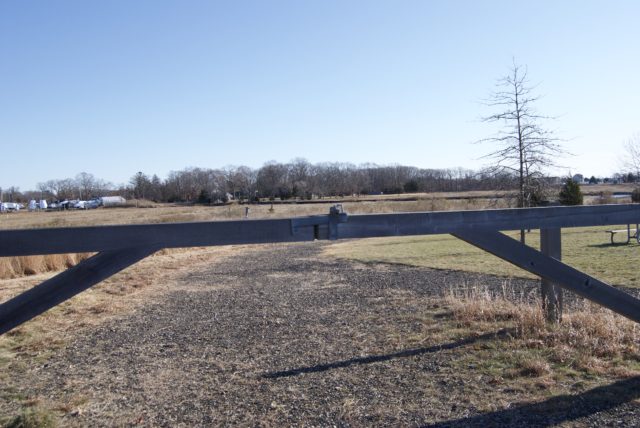
With pressure, the scale of the development shifted. Madison Landing was slated to be 70 single-family homes, 39 townhomes, and four, two-story buildings containing 83 apartments — 192 units total, in 2002. By 2004, it was reduced to 127 units. The consistent was the decision to keep it a 55+ age-restricted community, which was all the rage at that time, perhaps because towns would be able to build a tax base (to the tune of $1.3M per year) without having to expand public school services. Initially, these units were expected to be priced from $300,000 to $700,000.
This site required more than one signature for the development to move forward. Archaeologists checked it over. After all, it was not always a potato farm in its pre-airport life. Several hundred pieces of Indian artifacts, including pottery shards, were found. Without a burial site identified, the project would not be delayed for cultural reasons.
But, there were environmental concerns. The director of the Menunkatuck Audubon Society opposed Madison Landing, with Connecticut Audubon calling the site a critical bird habitat, where osprey, sedge wren, piping plover, and others had been sighted. Save the Sound opposed it.
There was less and less opportunity to play dumb about climate change by 2007, when there was peak coverage of the Intergovernmental Panel on Climate Change’s report. Even the Courant gave ink that year to how a marsh two towns west of Madison was losing upwards of ten feet of its “seaward edge” every year, noting that the whole Connecticut shoreline is on its way to being impacted: “these coastal wetlands trap sediment and filter contaminants from groundwater and surface water runoff. And marshes serve as a physical barrier between the sea and the billions of dollars worth of homes, businesses and infrastructure jammed along the Connecticut shorelines — a shock absorber for flood tides and storm surges. This is the front line in the battle over global warming.”
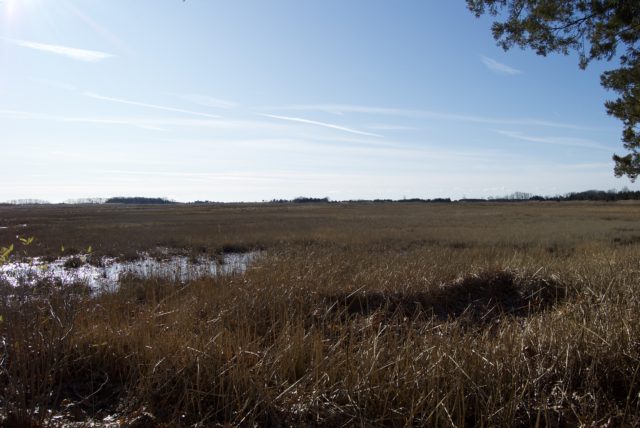
That should have been enough, but what delayed Madison Landing was shitty.
Well, sewage. There were concerns that this scale of development was going to impact the salt marsh and Hammonasset River, the latter of which already had high nitrogen levels. There was disagreement among experts, and someone equated this development to the equivalent of twenty homes. . . which seems not quite accurate, but anyway, this sewage treatment obstacle went unresolved until DEP ruled in favor of Madison Landing in September 2008, months after then-DEP commissioner Gina McCarthy told lawyers not to send legal briefs. Mere weeks later, Madison’s Water Pollution Control Authority approved regulations that would, going forward, hold developers responsible for operating wastewater treatment systems.
Madison Landing got the go ahead, so, what happened?
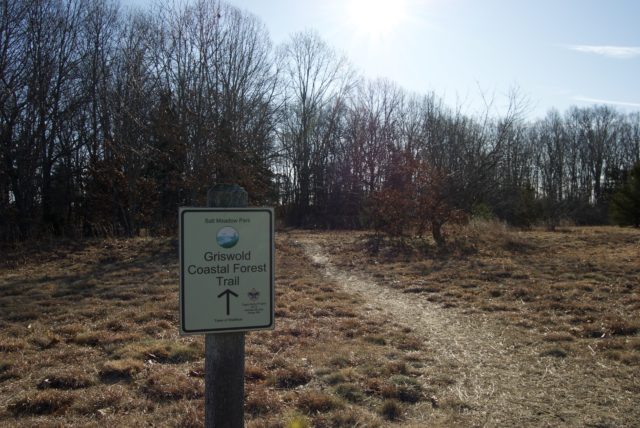
The United States was now deep into the Great Recession.
At the beginning of 2009, the developers are reported to be having conversations with the Trust for Public Land. The construction machines on the site are reported as not moving. In October 2009, the Trust for Public Land buys the land for $9.7 million; the developers had paid $4.4 million. It’s announced that most of the site will remain as open space.
Work on the park began in 2011 and completed a few years later
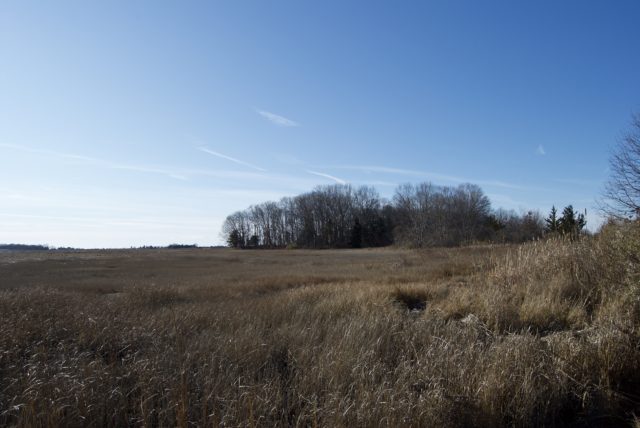
Whew! Anyone else want a glass of wine after all that?
Closer to the Rhode Island border is another vanished airport.
The landing field site for Stonington Airways was approved in 1928, and then…who knows?! It’s estimated that the airport shut down around 1940, but newspapers didn’t find much to report on here until the place closed. It doesn’t even get included in Wikipedia’s “notable former airports” list. That’s cold! It’s rumored to have gone by other names, but none of those come up in area newspaper searches either.
In the gap years, the land got some use, including as a meeting place, at least once, for the Colonial Retriever Field Trial Club in 1952. When making Barn Island WMA a state park came up, folks rejected it, saying in 1968 at the former airfield site would be a better swimming hole. It never became that.
In the early 1970s, the Courant announced the “First Major Drug Raid” (Anywhere? For Connecticut? Stonington? This property? Oh, “in the area”. . . that clears things up) in which six people were arrested with LSD and marijuana at the old Stonington Airport’s hangar. Getting high in a place that could get you high? Far out, man!
That did not stop the town from trying to buy the property — recreation and DPW storage for all! — but residents, in referendum, said nah in 1975. How about a motel? Condos? A campground? Psychiatric hospital? None of those ideas took flight.
Keep in mind, there are no public sewers or water service on the property and thirty acres of it are tidal wetlands.
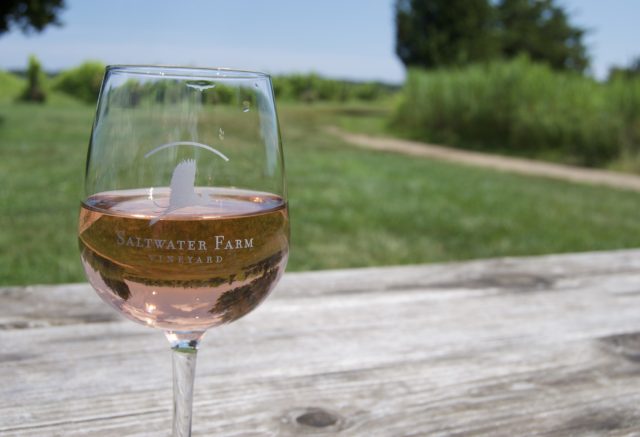
Despite stoners totally ruining the reputation, and all those other drawbacks, Sunnyside Realty bought the property toward the end of the decade and leased 35 of its acres to a corn farmer while pitching light manufacturing and a new airstrip, which, of course, residents opposed because danger and noise. (Can we be this angry about danger and noise when highway widening projects are announced, y’all?)
The next big idea was aquaculture, or what was being dubbed a “fish ranch,” which sounds less terrifying somehow than factory-farmed fish. A department from URI was looking here (and elsewhere) but not in Rhode Island because the “rules for pumping and discharging of water are so inflexible.”
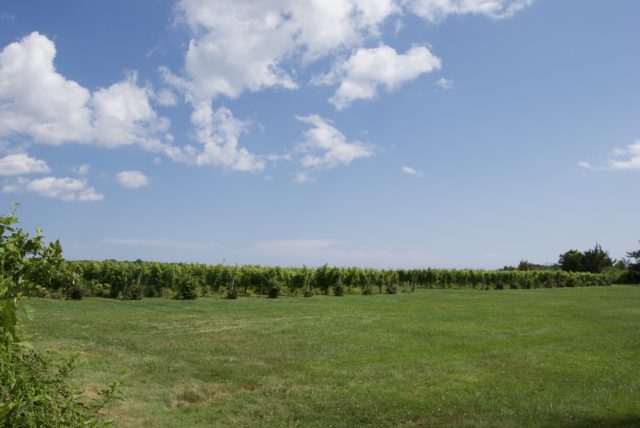
There was a whole lot of silence until 2001, when the property switched hands without much fanfare. The vineyard, with views of Wequetequock Cove and beyond, was established, and in 2010, Saltwater Farm Vineyard opened to the public in 2010. “Stonington Airpark Airport” remains included on some maps, but an in-person visit or close look at Google Maps reveals that the former runway is now an area between rows of grapevines.
There are lessons in this:
- Stoners will infest abandoned airport hangars. That’s a when, not an if.
- People will hold tight to inefficient and polluting technologies long beyond the time when it makes any financial sense to do so
- Housing density is smart growth, but it never makes sense to put housing — dense or sparse — right on the coast because sea levels are rising, so take that inland, and not near bogs and streams either.
- If an organization says it is here to protect the environment, do the research to see if their actions reflect this.
Salt & Air
It seems weird to build an airport in a salt marsh, but what do I know, I’m not a 20th century Man vs. Nature type, out to conquer the world, one strip of tarmac at a time.
Two such small airfields on our coast closed, and when they did, they offered up all this flat land.
Madison’s Salt Meadow Park is a very sophisticated town park. Abusive and insulting language is prohibited, so don’t even fucking think about it.
There are soccer fields. Brand new picnic tables. A coastal forest that provides habitat for migratory birds. Views of the salt marsh — 400 acres of it — that surrounds Salt Meadow Park. Its borders are Long Island Sound and the Hammonasset River.
This almost became colorless gold coast sprawl.
What is now Salt Meadow Park had other lives.
It was a potato farm until purchased by the Griswold family in 1930. Beginning the following year, they operated a small airport on that land for the decades that followed. There was a boom in business during the WWII era, and then a long decline with attempts to make changes that were viewed each time as potential elixirs. The grass runway was converted to asphalt in 1969. Because the Town of Madison paid for the pavement, the family had to give the property title to the Town for twenty years. The Madison Aviation Commission was also created at this time. The paving was a move that the airport owner would later blame for the business flailing. In the early 70s, the airport operator pushed for power lines to be moved. Despite these changes, small planes using this airport continued to crash. DEP denied permission to expand the runway, as that would have encroached on wetlands.
There were eighteen privately-owned commercial airports remaining in Connecticut around the time the Griswold family and Town of Madison would need to figure out what to do with the title. It was expected that Griswold Airport would be closing soon– unsurprising since the owner, for at least five years, openly admitted to struggles. I would feel worse about so many of them shutting down, except that air travel is terrible for the environment. Usually when that conversation happens, it gets stuck in the realm of jet fuel and carbon emissions. This is not a newsflash, but airplanes don’t perform like helicopters. They require long, flat parcels of land. Now, the Connecticut Airport Authority tries to demand municipalities remove trees, which they refer to as “obstructions.” Then there’s the noise pollution. Small airports might make sense in larger states like Alaska or Montana, but in the third smallest state, you gotta be asking how many of these are necessary.
Here is where things got weird. Around that twenty year mark following the installation of an asphalt runway, the Town of Madison decided it should not purchase the airport. So, it operated in limbo for the next decade and change. Nobody was biting.
Without public hearing, the CT DEP (now, DEEP) traded away an easement in 2000; months later, a luxury condo developer signed paperwork for the site.
The developer was talking 250 units of age-restricted housing on the 42 acres between Route 1 and Hammonasset Beach State Park. Water’s edge.
That is wildly inappropriate land use knowing what we know now about rising sea levels, and, it was not any more excusable at the time. A 1983 article in the Hartford Courant — not an obscure publication or paywalled scholarly journal — stated that “If the Earth gets as warm as some scientists have predicted, developers could make a killing turning the State Capitol into waterfront condos.” That item was called “Wait, the Shore May Come To You.” In it, they noted that Connecticut’s “barrier beaches could disappear, and parks and tens of thousands of cottages along Long Island Sound would be flooded. Low-lying chunks of land all along the coast from Greenwich to Stonington would be under water.” The paper published “Our Shore Life Is Hurting” in 1969, describing how salt marshes had been “destroyed since the influx of industrial and marine construction,” and how a resident of the neighboring town of Clinton wanted to change zoning along the coast because “it is important that houses are not developed on such low-lying land which are vulnerable to periodic flooding by storm tides.” Perhaps the details were fuzzy, but investing in new properties with this information available seems like a ludicrous waste of money.
Madison’s residents were pushing back, which is none too surprising from a place regarded as the Greenwich of eastern Connecticut, but considering that the former airport is obviously in an environmentally sensitive area, this can’t be written off as pure NIMBYism. (For that, see Newington’s fretting about traffic when affordable housing is proposed for a site right next to the busway)
With pressure, the scale of the development shifted. Madison Landing was slated to be 70 single-family homes, 39 townhomes, and four, two-story buildings containing 83 apartments — 192 units total, in 2002. By 2004, it was reduced to 127 units. The consistent was the decision to keep it a 55+ age-restricted community, which was all the rage at that time, perhaps because towns would be able to build a tax base (to the tune of $1.3M per year) without having to expand public school services. Initially, these units were expected to be priced from $300,000 to $700,000.
This site required more than one signature for the development to move forward. Archaeologists checked it over. After all, it was not always a potato farm in its pre-airport life. Several hundred pieces of Indian artifacts, including pottery shards, were found. Without a burial site identified, the project would not be delayed for cultural reasons.
But, there were environmental concerns. The director of the Menunkatuck Audubon Society opposed Madison Landing, with Connecticut Audubon calling the site a critical bird habitat, where osprey, sedge wren, piping plover, and others had been sighted. Save the Sound opposed it.
There was less and less opportunity to play dumb about climate change by 2007, when there was peak coverage of the Intergovernmental Panel on Climate Change’s report. Even the Courant gave ink that year to how a marsh two towns west of Madison was losing upwards of ten feet of its “seaward edge” every year, noting that the whole Connecticut shoreline is on its way to being impacted: “these coastal wetlands trap sediment and filter contaminants from groundwater and surface water runoff. And marshes serve as a physical barrier between the sea and the billions of dollars worth of homes, businesses and infrastructure jammed along the Connecticut shorelines — a shock absorber for flood tides and storm surges. This is the front line in the battle over global warming.”
That should have been enough, but what delayed Madison Landing was shitty.
Well, sewage. There were concerns that this scale of development was going to impact the salt marsh and Hammonasset River, the latter of which already had high nitrogen levels. There was disagreement among experts, and someone equated this development to the equivalent of twenty homes. . . which seems not quite accurate, but anyway, this sewage treatment obstacle went unresolved until DEP ruled in favor of Madison Landing in September 2008, months after then-DEP commissioner Gina McCarthy told lawyers not to send legal briefs. Mere weeks later, Madison’s Water Pollution Control Authority approved regulations that would, going forward, hold developers responsible for operating wastewater treatment systems.
Madison Landing got the go ahead, so, what happened?
The United States was now deep into the Great Recession.
At the beginning of 2009, the developers are reported to be having conversations with the Trust for Public Land. The construction machines on the site are reported as not moving. In October 2009, the Trust for Public Land buys the land for $9.7 million; the developers had paid $4.4 million. It’s announced that most of the site will remain as open space.
Work on the park began in 2011 and completed a few years later
Whew! Anyone else want a glass of wine after all that?
Closer to the Rhode Island border is another vanished airport.
The landing field site for Stonington Airways was approved in 1928, and then…who knows?! It’s estimated that the airport shut down around 1940, but newspapers didn’t find much to report on here until the place closed. It doesn’t even get included in Wikipedia’s “notable former airports” list. That’s cold! It’s rumored to have gone by other names, but none of those come up in area newspaper searches either.
In the gap years, the land got some use, including as a meeting place, at least once, for the Colonial Retriever Field Trial Club in 1952. When making Barn Island WMA a state park came up, folks rejected it, saying in 1968 at the former airfield site would be a better swimming hole. It never became that.
In the early 1970s, the Courant announced the “First Major Drug Raid” (Anywhere? For Connecticut? Stonington? This property? Oh, “in the area”. . . that clears things up) in which six people were arrested with LSD and marijuana at the old Stonington Airport’s hangar. Getting high in a place that could get you high? Far out, man!
That did not stop the town from trying to buy the property — recreation and DPW storage for all! — but residents, in referendum, said nah in 1975. How about a motel? Condos? A campground? Psychiatric hospital? None of those ideas took flight.
Keep in mind, there are no public sewers or water service on the property and thirty acres of it are tidal wetlands.
Despite stoners totally ruining the reputation, and all those other drawbacks, Sunnyside Realty bought the property toward the end of the decade and leased 35 of its acres to a corn farmer while pitching light manufacturing and a new airstrip, which, of course, residents opposed because danger and noise. (Can we be this angry about danger and noise when highway widening projects are announced, y’all?)
The next big idea was aquaculture, or what was being dubbed a “fish ranch,” which sounds less terrifying somehow than factory-farmed fish. A department from URI was looking here (and elsewhere) but not in Rhode Island because the “rules for pumping and discharging of water are so inflexible.”
There was a whole lot of silence until 2001, when the property switched hands without much fanfare. The vineyard, with views of Wequetequock Cove and beyond, was established, and in 2010, Saltwater Farm Vineyard opened to the public in 2010. “Stonington Airpark Airport” remains included on some maps, but an in-person visit or close look at Google Maps reveals that the former runway is now an area between rows of grapevines.
There are lessons in this:
Related Posts
Night Fall Entertains Children with Puppets and Dance
Beyond Hartford: Norwalk
City to Denounce Arizona?